


-
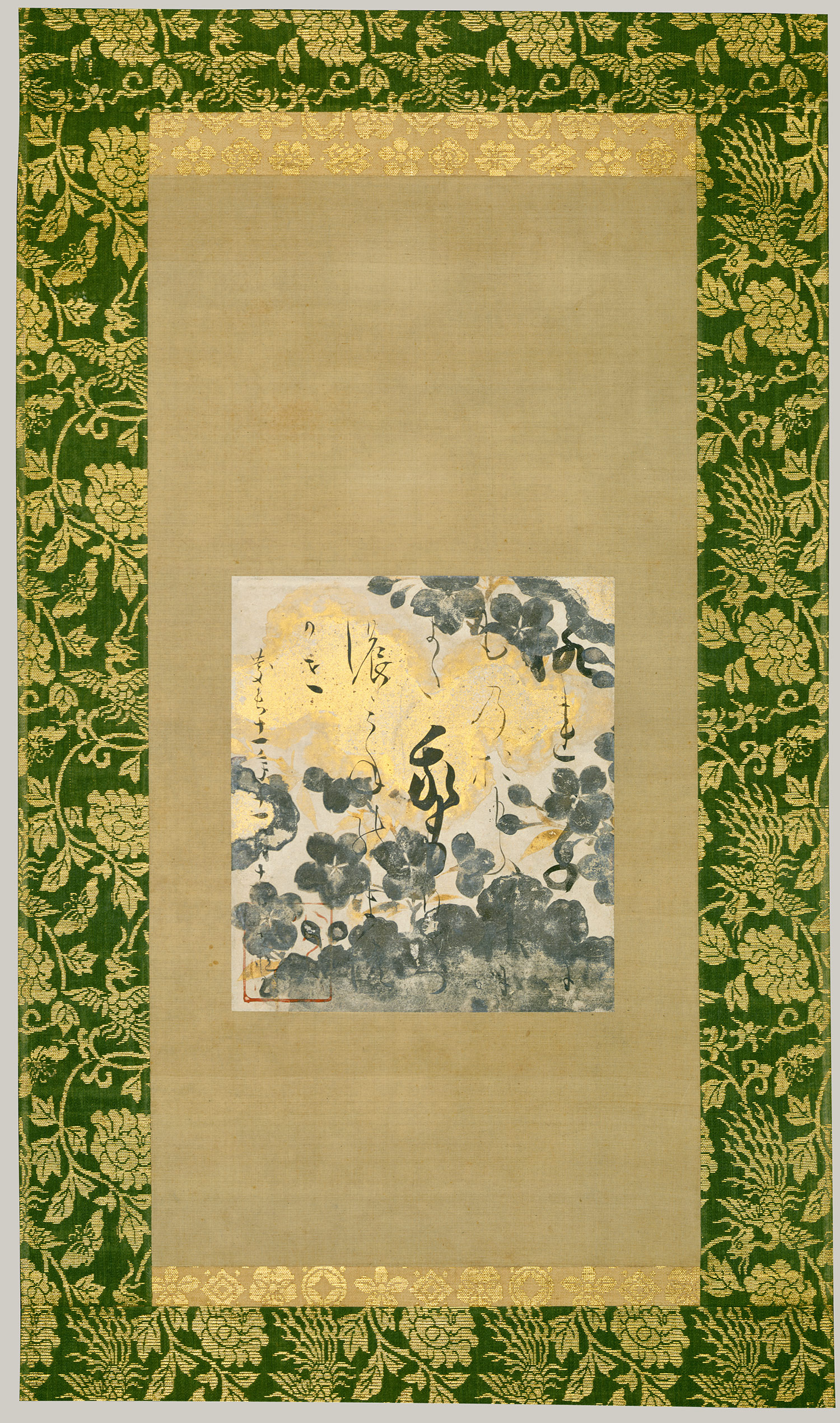
Poem page mounted as a hanging scroll, Momoyama period (1573–1615), dated 1606
Painting by Tawaraya Sotatsu (Japanese, active early 17th century); Calligraphy by Hon'ami Koetsu (Japanese, 1558–1637)
Ink on paper decorated with gold and silver
7 7/8 x 7 in. (20 x 17.8 cm)
The Harry G. C. Packard Collection of Asian Art, Gift of Harry G. C. Packard, and Purchase, Fletcher, Rogers, Harris Brisbane Dick, and Louis V. Bell Funds, Joseph Pulitzer Bequest and The Annenberg Fund Inc. Gift, 1975 (1975.268.59)
-

Sword blade (katana), Edo period (1615–1868), dated June 1622
Kanewaka, also known as Takahira (Japanese, active 1609–26)
Steel
L. 36 1/2 in. (92.8 cm), edge 28 1/8 in. (71.5 cm)
Signed and dated: Echu no kami Fujiwara no Takahira / Gen'na hachi nen rokugatsu hi
Gift of Etsuko O. Morris and John H. Morris Jr., in memory of Dr. Frederick M. Pederson, 2007 (2007.478.2a,b)
-
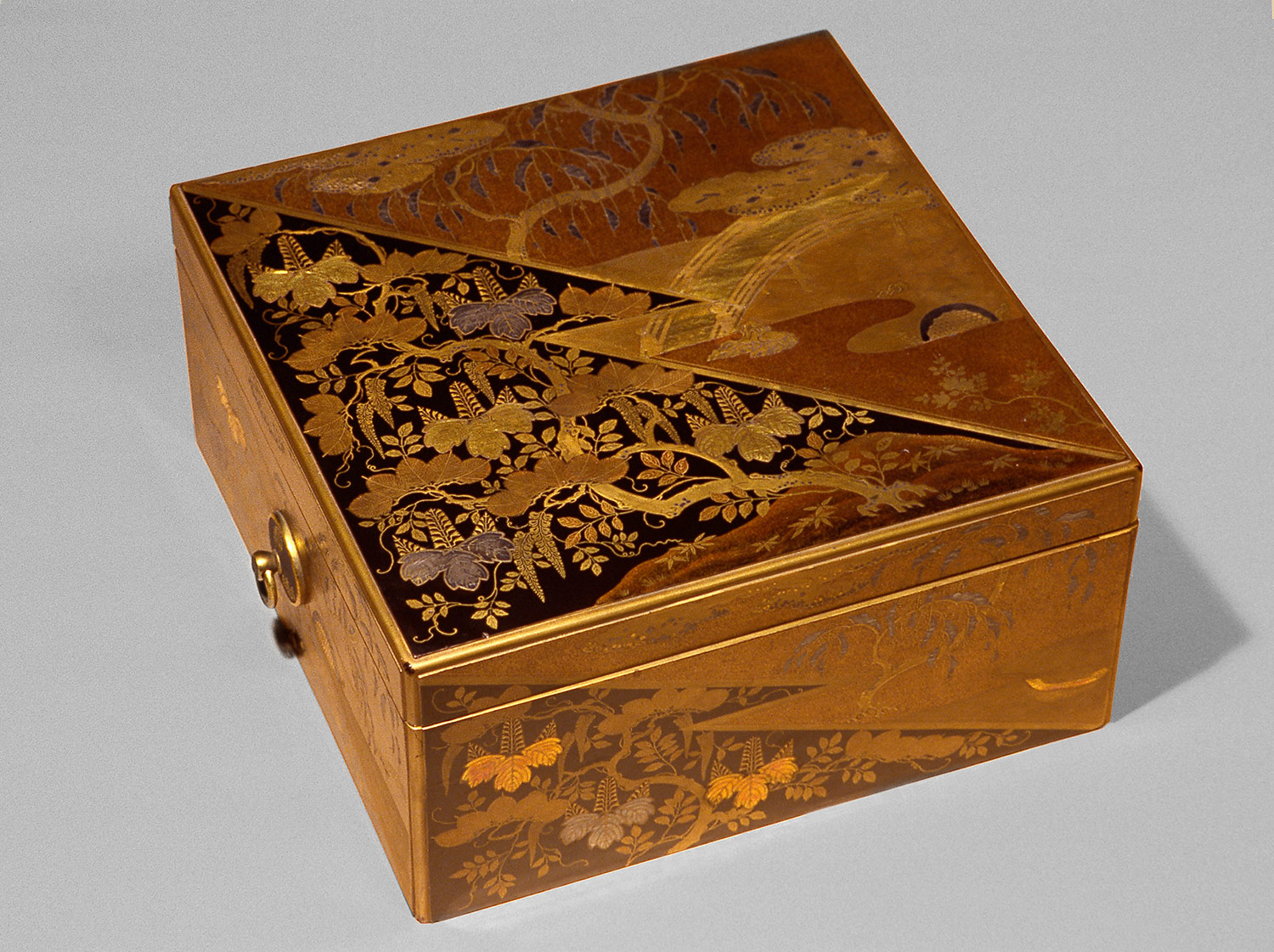
Stationery box, Momoyama period (1573–1615), early 17th century
Japan
Lacquer, with sprinkled gold decoration in Kodaiji style, inlaid with gold and silver foil
H. 8 1/4 in. (21 cm), W. 17 15/16 in. (45.6 cm)
Purchase, Lila Acheson Wallace Gift, 1987 (1987.82ab)
-
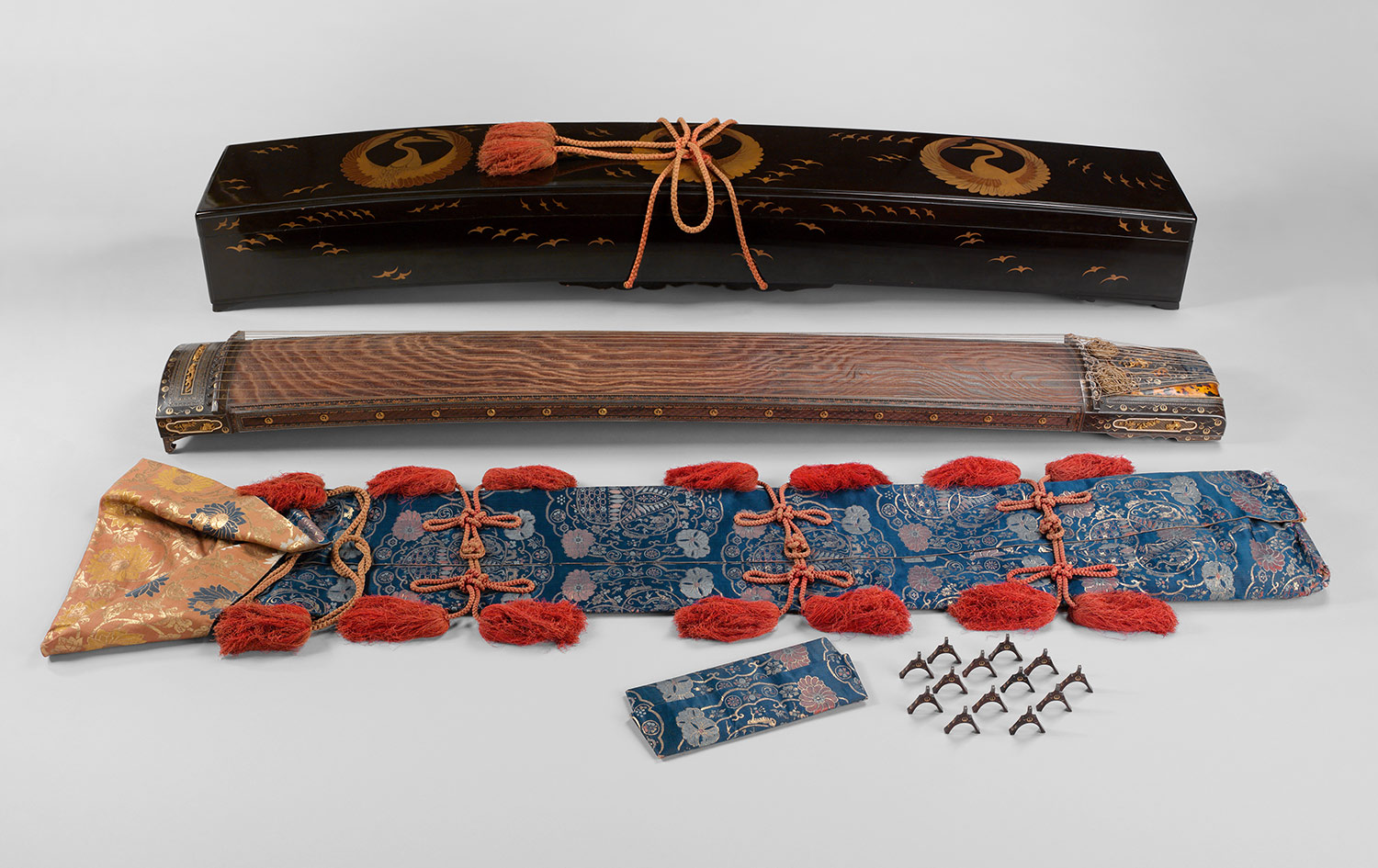
Koto with Case, early 17th century; fabric
koto wrap, 18th and 19th century
Goto Teijo, Ninth Generation Goto Master (Japanese, 1603–1673)
Japan
Various woods, ivory and tortoiseshell inlay, gold and silver inlays, metalwork
5 1/8 x 9 1/2 x 74 5/8 in. (13 x 24.2 x 189.5 cm)
Purchase, Amati Gifts, 2007 (2007.194a–f)
-

The Sixth Patriarch of Zen at the Moment of Enlightenment, Edo period (1615–1868), 1635–45
Kano Tan'yu (Japanese, 1602–1674)
Ink on paper
40 x 9 1/2 in. (101.6 x 24.1 cm)
The Miriam and Ira D. Wallace Foundation Fund, 2006 (2006.174)
-
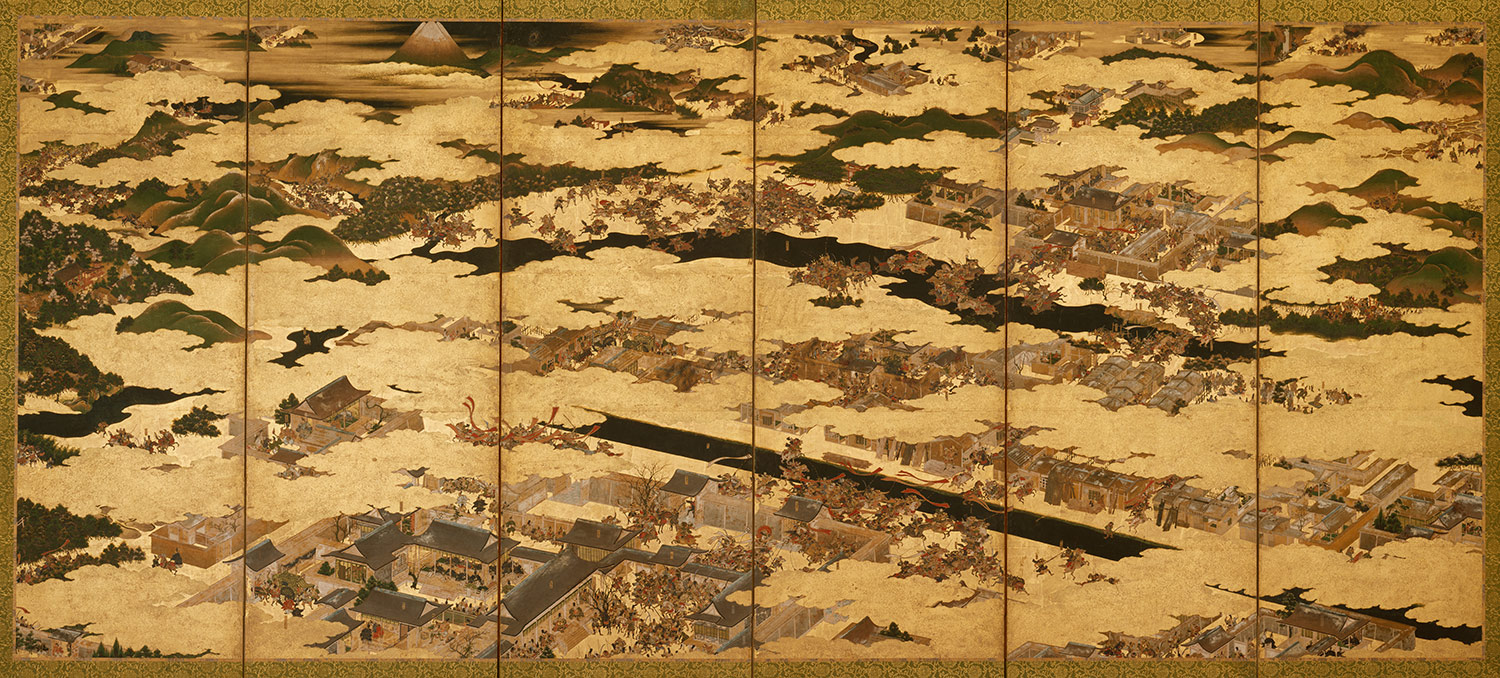
The Battles of Hogen and Heiji, Edo period (1615–1868), 17th century
Japanese
Pair of six-panel folding screens; ink, color, and gold on paper
Each 60 15/16 in. x 11 ft. 8 in. (154.8 x 355.6 cm)
Rogers Fund, 1957 (57.156.4-5)
-

Inro with decoration of Portuguese figures, Edo period (1615–1868), 17th century
Wood with black and gold lacquer
H. 3 9/16 in. (9 cm)
The Harry G. C. Packard Collection of Asian Art, Gift of Harry G. C. Packard and Purchase, Fletcher, Rogers, Harris Brisbane Dick and Louis V. Bell Funds, Joseph Pulitzer Bequest and The Annenberg Fund Inc. Gift, 1975 (1975.268.178)
-
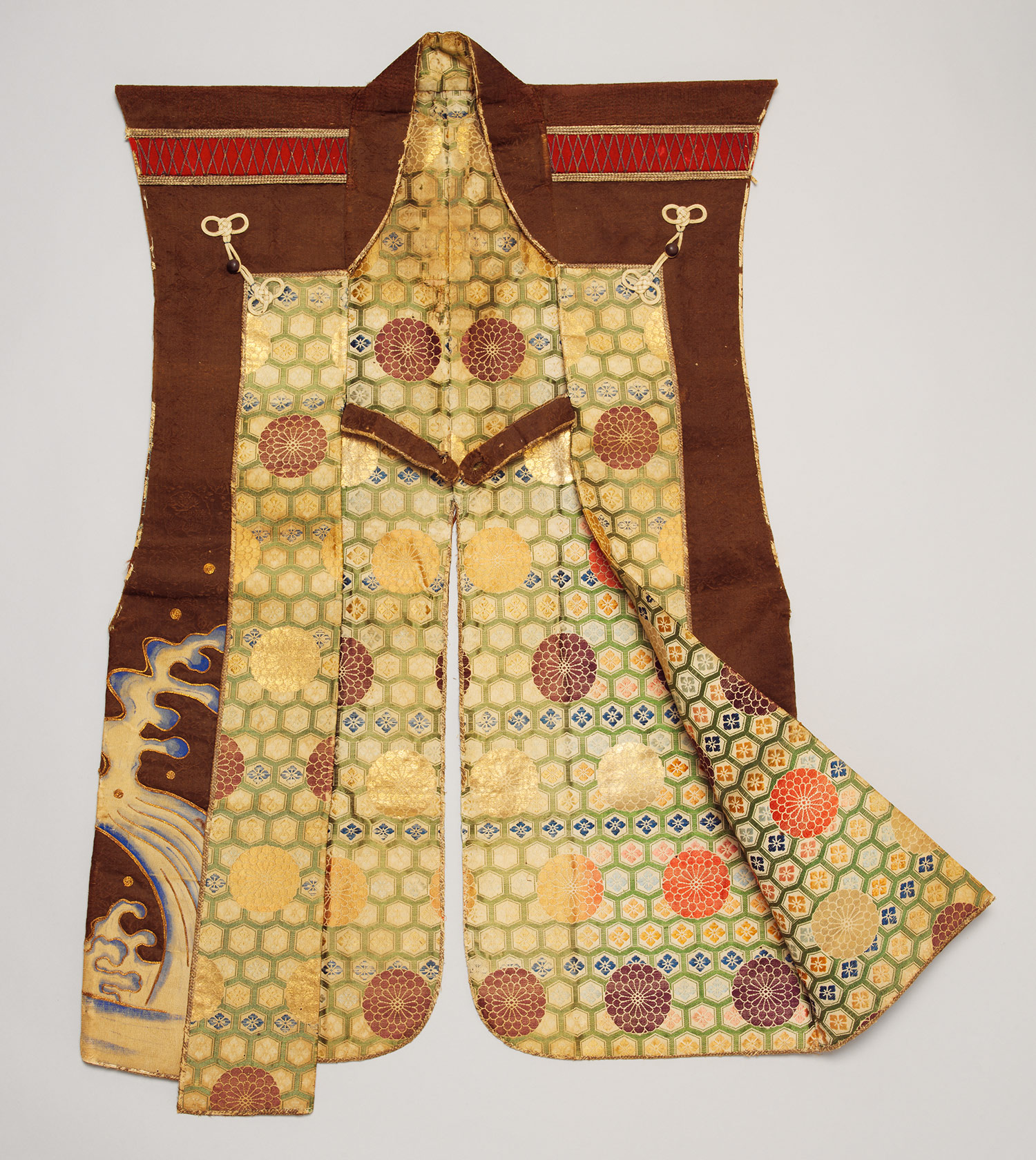
Surcoat (jimbaori), Edo period (1615–1868), 17th century
Japan
Silk, felt, metallic thread, lacquered wood
H. 38 3/8 in. (97.3 cm)
Purchase, Charles and Ellen Baber Gift, 2006 (2006.95)
-
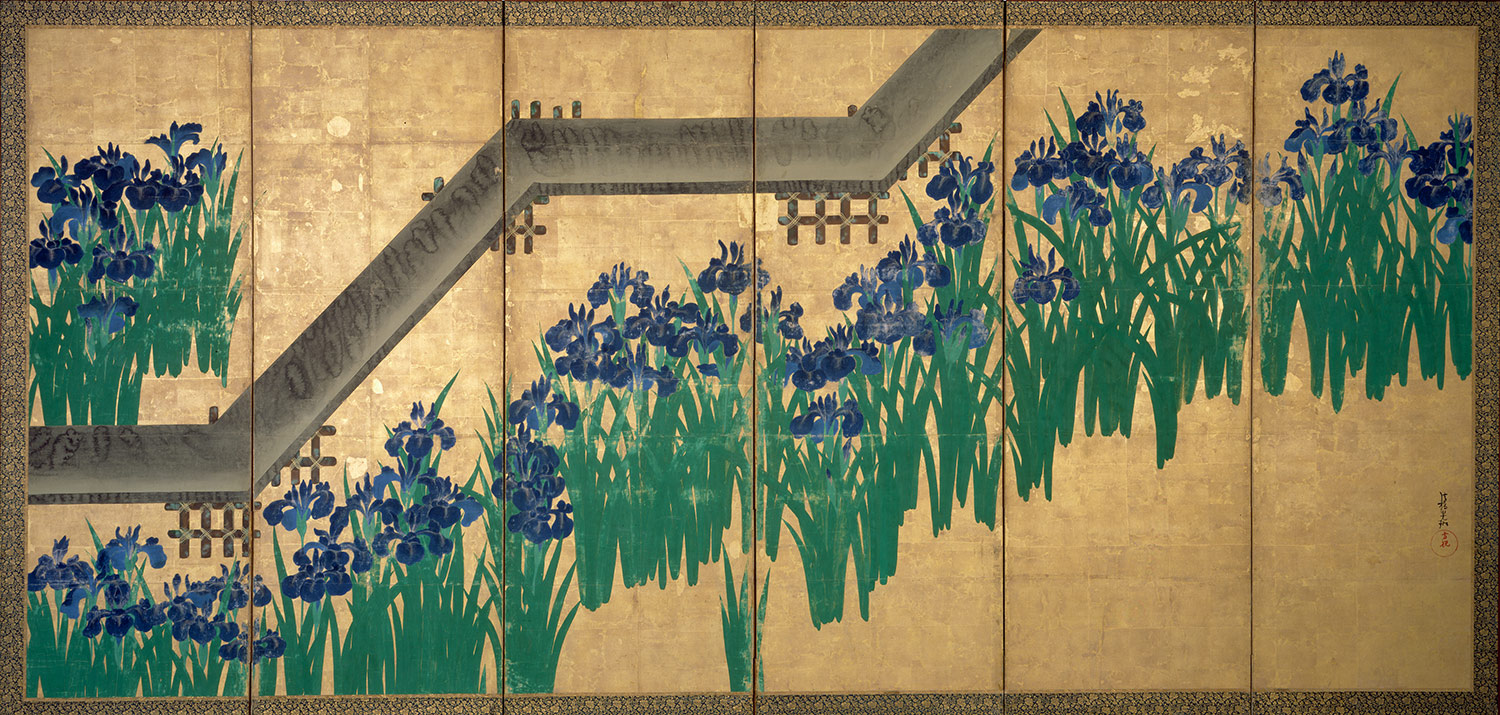
Eight-Planked Bridge (Yatsuhashi)Ogata Korin (Japanese, 1658–1716)
Pair of six-panel folding screens; ink and color on gilded paper
Each 70 1/2 in. x 12 ft. 2 1/4 in. (179.1 x 371.5 cm)
Purchase, Louisa Eldridge McBurney Gift, 1953 (53.7.1-2)
-

Rough Waves, Edo period (1615–1868), ca. 1704–9
Ogata Korin (Japanese, 1658–1716)
Two-panel screen; ink, color, and gold on gilded paper
57 11/16 x 65 1/8 in. (146.6 x 165.4 cm); folded: 60 x 32 x 2 1/4 in. (152.4 x 81.3 x 5.7 cm)
Fletcher Fund, 1926 (26.117)
-
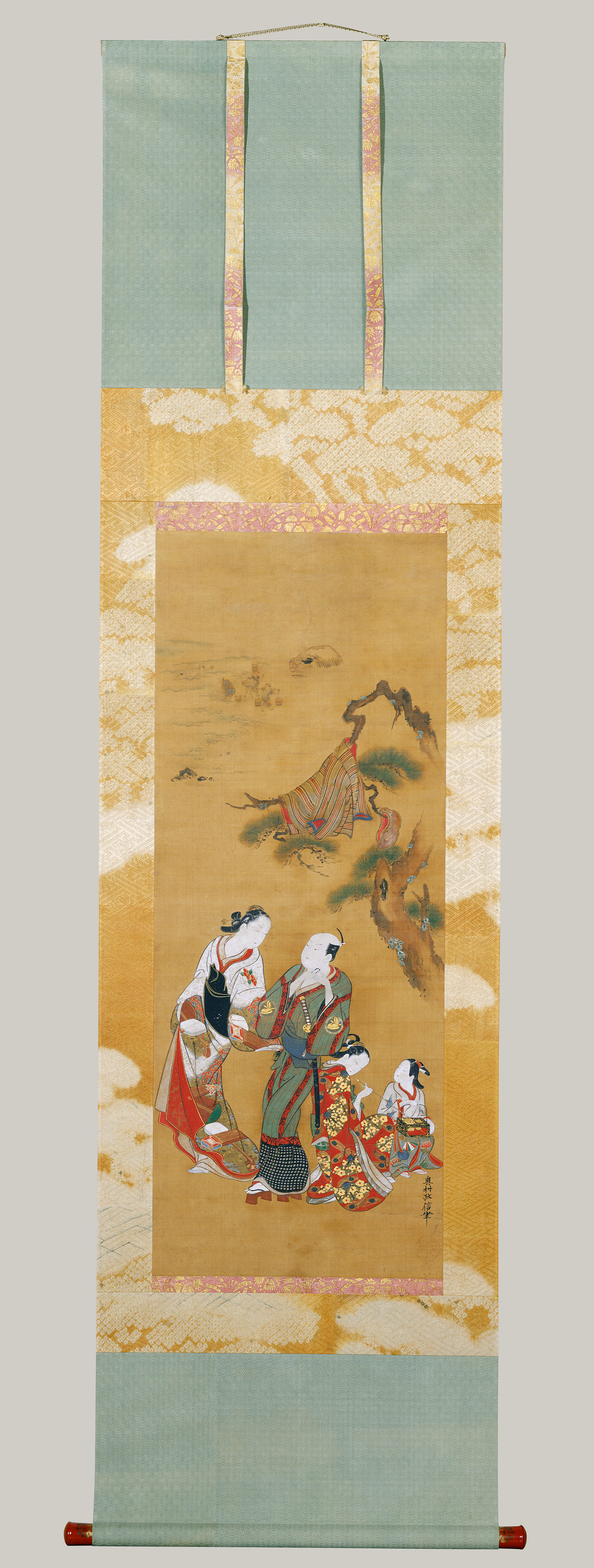
Yukihira and the Salt Maidens, Edo period (1615–1868), ca. 1716–35
Okumura Masanobu (Japanese, 1686–1764)
Hanging scroll; ink and color on silk
33 1/8 x 12 7/8 in. (84.1 x 32.7 cm)
The Harry G. C. Packard Collection of Asian Art, Gift of Harry G. C. Packard, and Purchase, Fletcher, Rogers, Harris Brisbane Dick, and Louis V. Bell Funds, Joseph Pulitzer Bequest and The Annenberg Fund Inc. Gift, 1975 (1975.268.126)
-
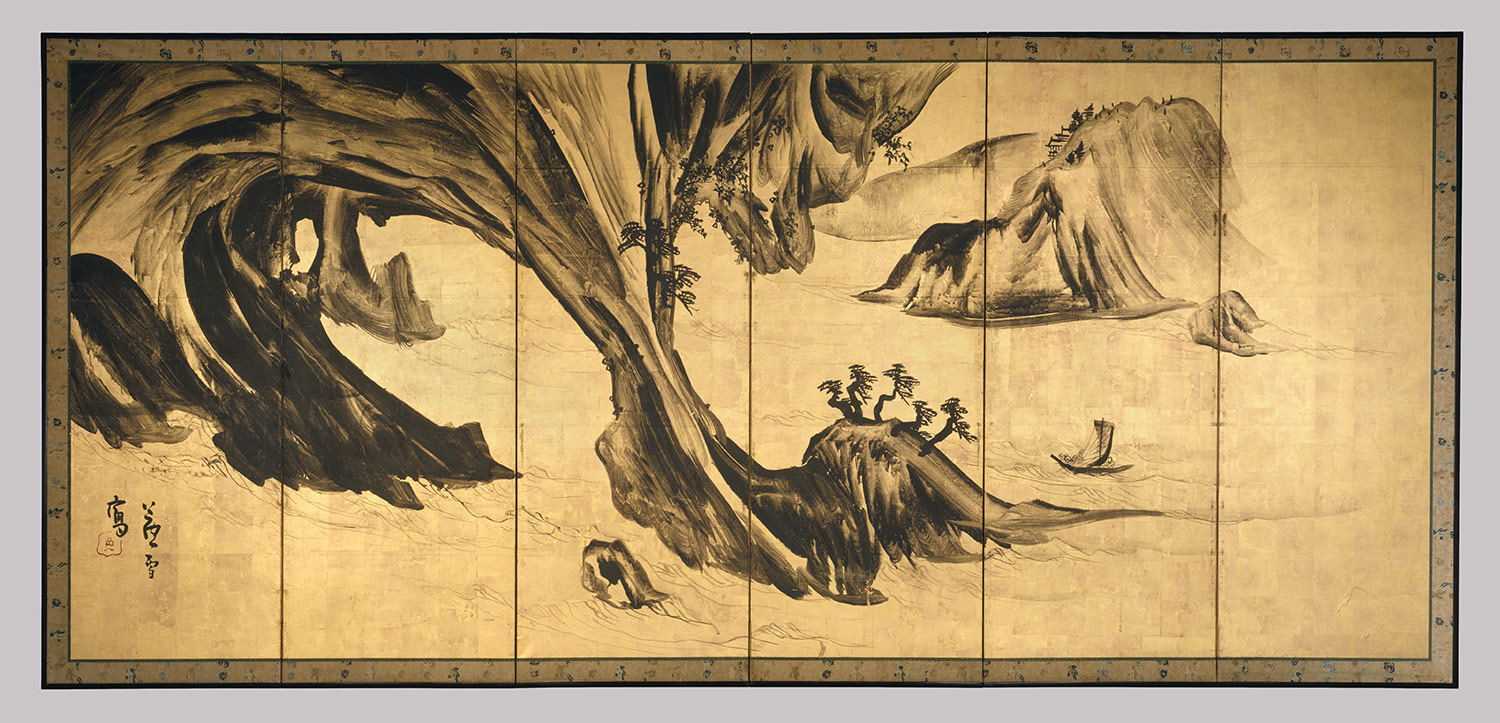
Landscape and Chinese FiguresNagasawa Rosetsu (Japanese, 1754–1799)
Pair of six-panel folding screens; ink on gilded paper
Each 67 3/8 x 146 3/4 in. (171.1 x 372.7 cm)
The Harry G. C. Packard Collection of Asian Art, Gift of Harry G. C. Packard, and Purchase, Fletcher, Rogers, Harris Brisbane Dick, and Louis V. Bell Funds, Joseph Pulitzer Bequest and The Annenberg Fund Inc. Gift, 1975 (1975.268.75, 76)
-
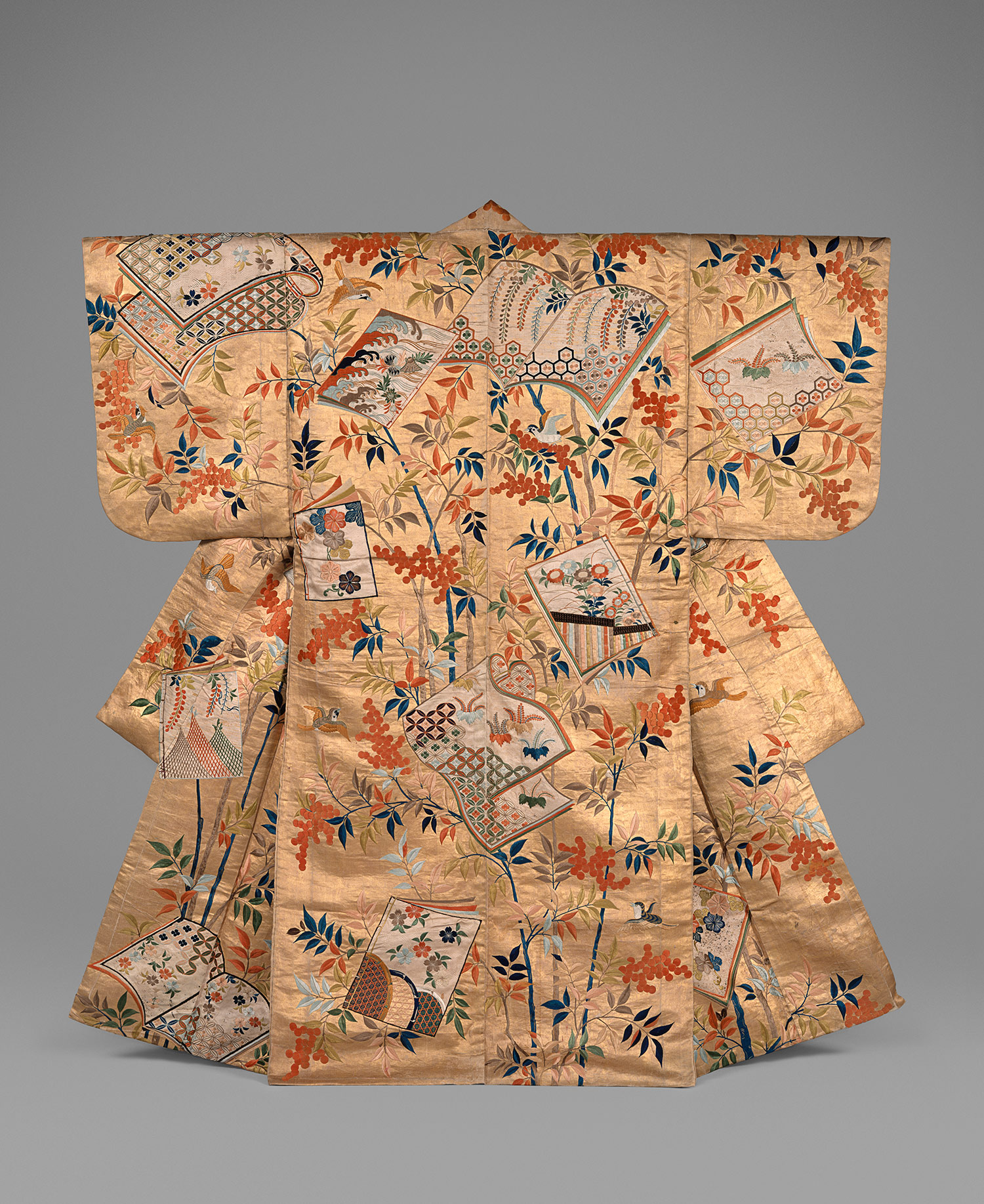
Noh costume (nuihaku) with books and nandina branches, Edo period (1615–1868), second half of 18th century
Japan
Silk embroidery and metallic leaf on silk satin
Overall 65 3/4 x 56 3/4 in. (167 cm)
Gift of Mr. and Mrs. Paul T. Nomura, in memory of Mr. and Mrs. S. Morris Nomura, 1989 (1989.367)
-
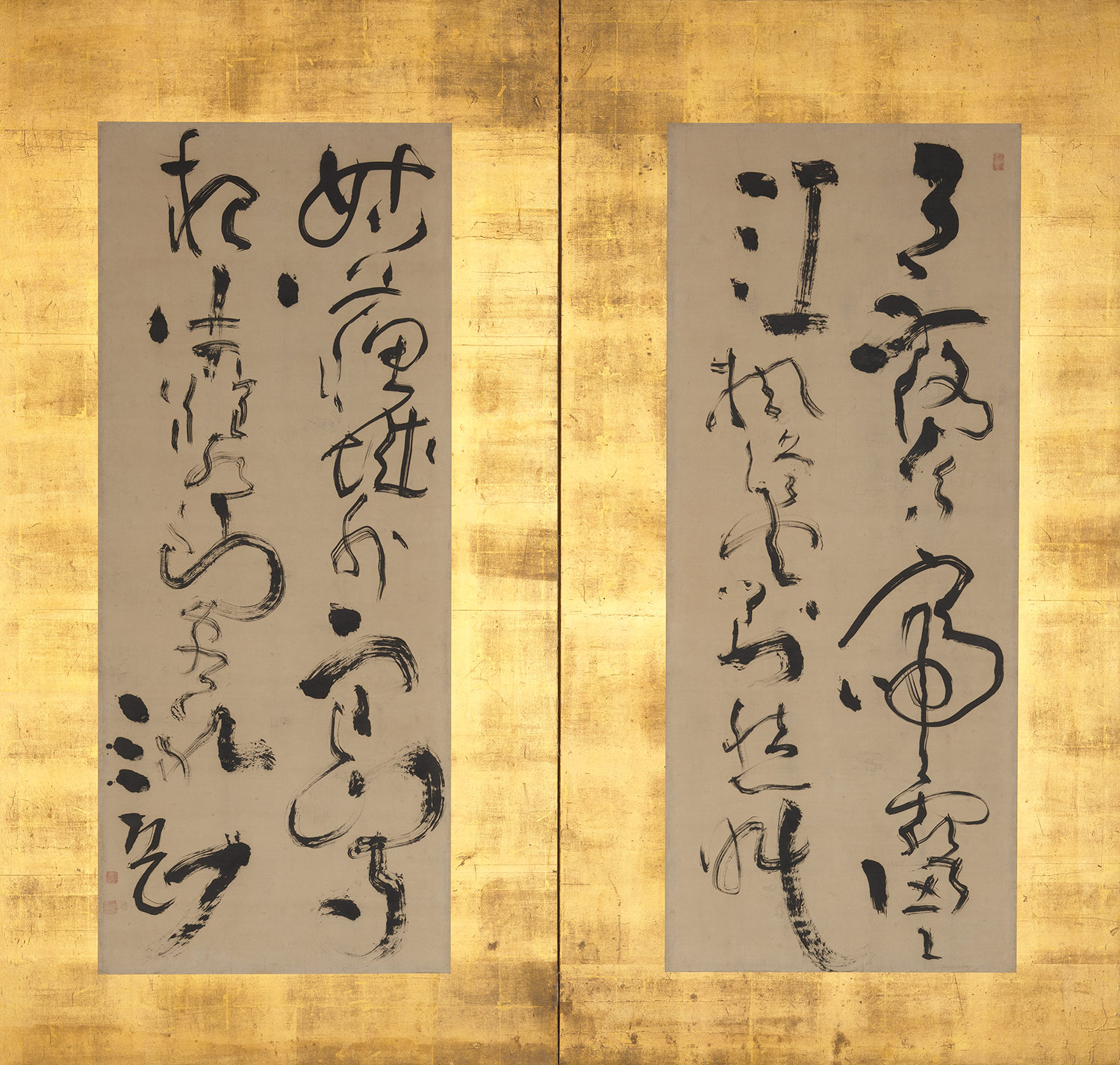
Calligraphy of "Maple Bridge Night Mooring" by Zhang Zhi, Edo period (1615–1868), ca. 1770
Ike Taiga (Japanese, 1723–1776)
Two-panel folding screen: ink on paper
68 3/4 x 72 3/4 in. (174.6 x 184.8 cm)
Signed Sangaku and bearing three seals: Zenshin Sôma Hô Kyûkô, Ike Mumei in, and Nigaku Dôja
Purchase, Friends of Asian Art Gifts, 2008 (2008.66)
-
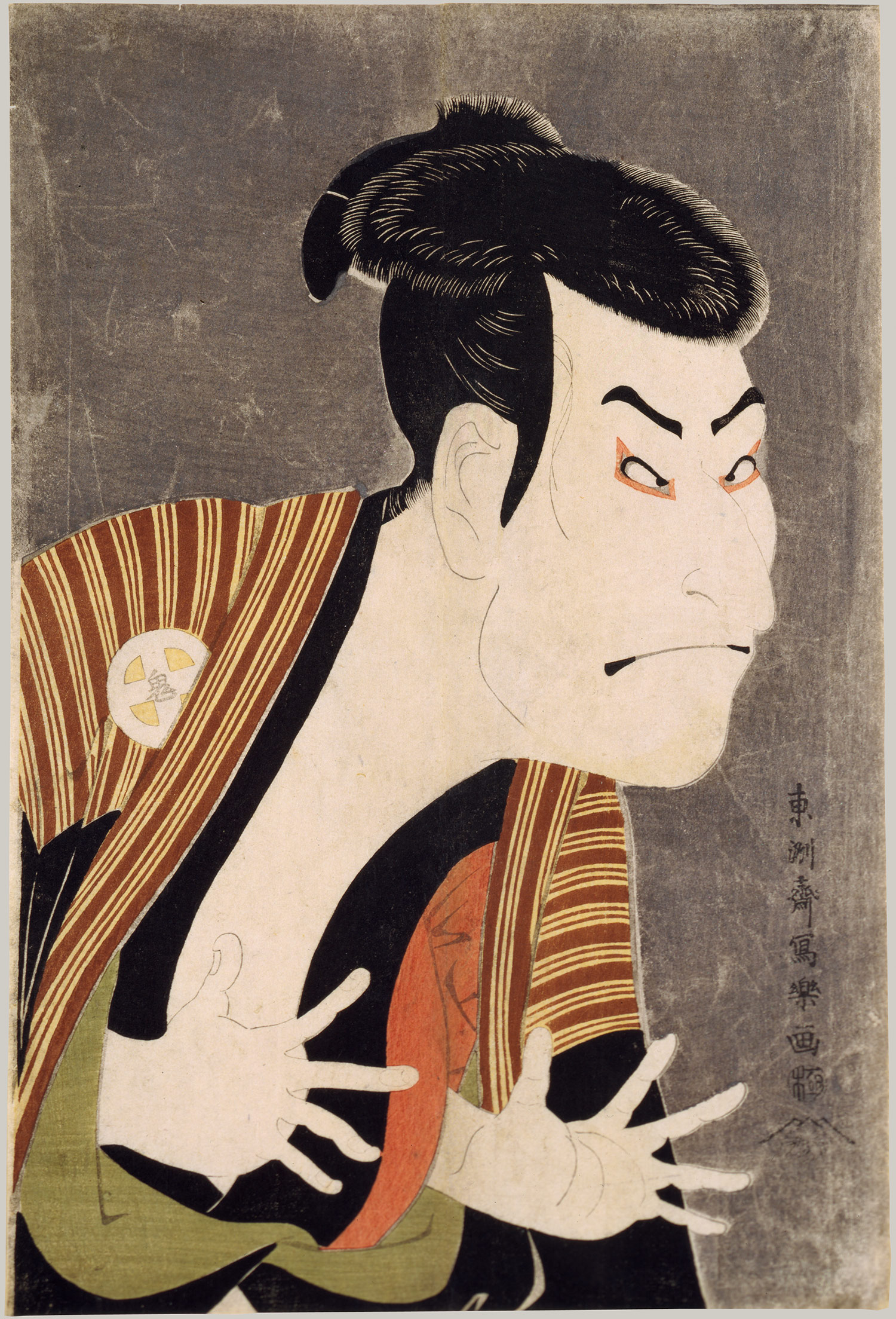
Otani Oniji II, dated 1794
Toshusai Sharaku (Japanese, active 1794–95)
Polychrome woodcut print on paper
15 x 9 7/8 in. (38.1 x 22.9 cm)
Henry L. Phillips Collection, Bequest of Henry L. Phillips, 1939 (JP2822)
-
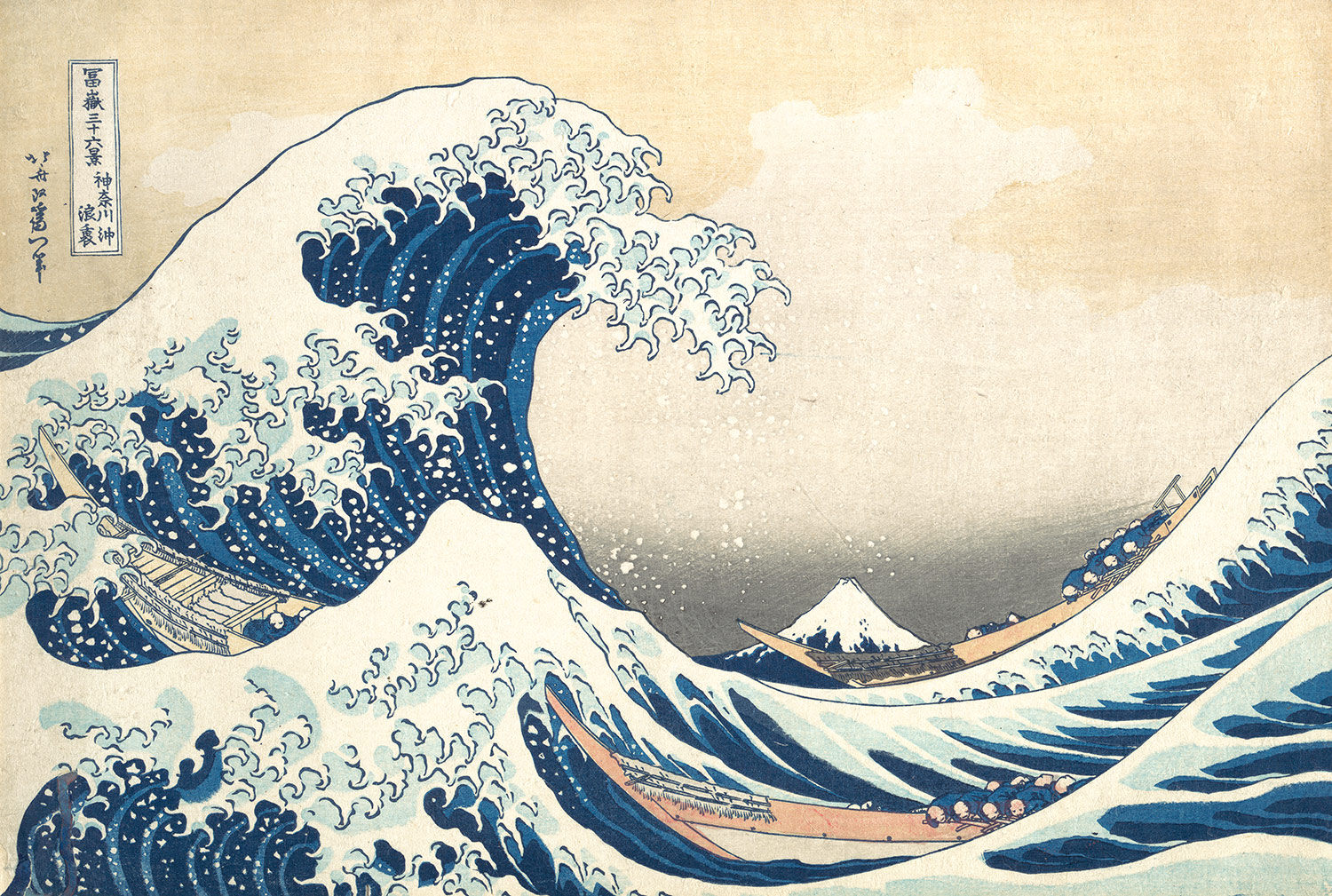
The Great Wave at Kanagawa (from a Series of Thirty-Six Views of Mount Fuji), Edo period (1615–1868), ca. 1831–33
Katsushika Hokusai (Japanese, 1760–1849); Published by Eijudo
Polychrome ink and color on paper
10 1/8 x 14 15/16 in. (25.7 x 37.9 cm) (Oban size)
H. O. Havemeyer Collection, Bequest of Mrs. H. O. Havemeyer, 1929 (JP1847)
-
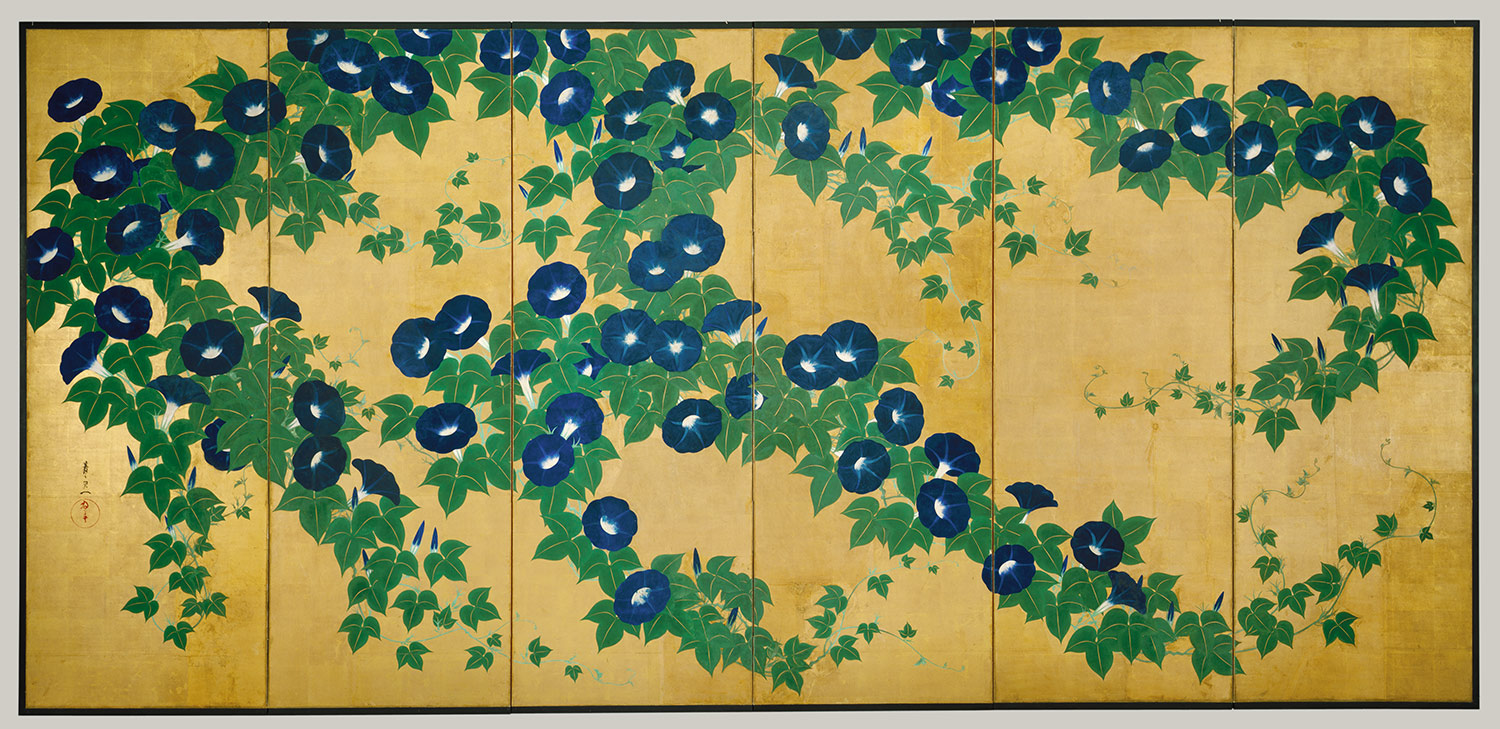
Morning Glories, Edo period (1615–1868), 19th century
Suzuki Kiitsu (Japanese, 1796–1858)
Pair of six-panel folding screens; ink, color, and gold on gilded paper
70 3/16 x 149 1/2 in. (178.2 x 379.8 cm)
Seymour Fund, 1954 (54.69.1,2)
-
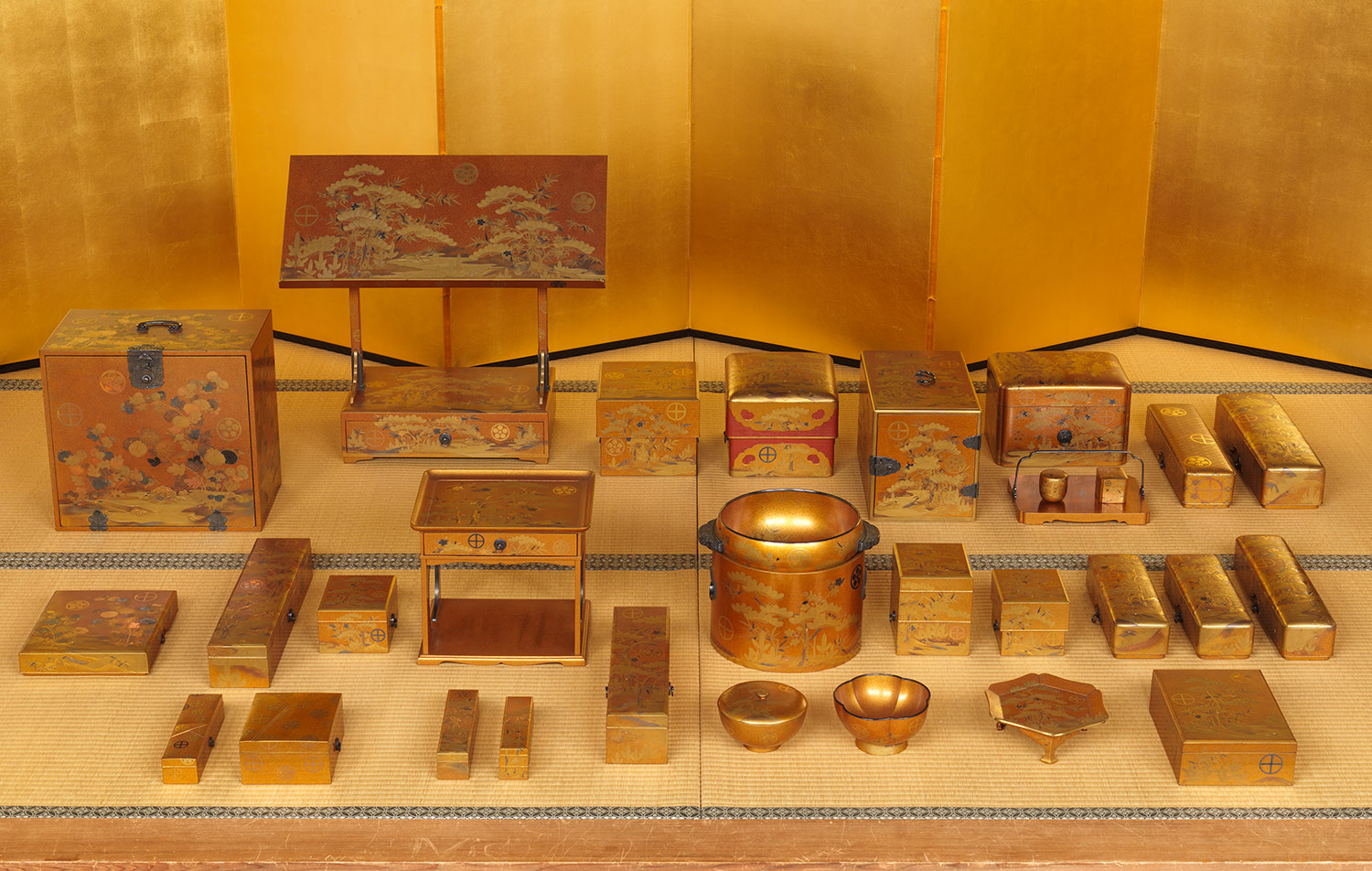
Daimyô wedding set with pine, bamboo, and cherry blossom decoration, Edo period (1615–1868), 19th century
Japan
Sprinkled gold, lacquer
Hewitt Fund, 1910 (10.7.1–.31)
View SlideshowView Thumbnails- Slideshow 1
- Slideshow 2
- Slideshow 3
- Slideshow 4
- Slideshow 5
- Slideshow 6
- Slideshow 7
- Slideshow 8
- Slideshow 9
- Slideshow 10
- Slideshow 11
- Slideshow 12
- Slideshow 13
- Slideshow 14
- Slideshow 15
- Slideshow 16
- Slideshow 17
- Slideshow 18
In the harshly controlled feudal society governed for over 250 years by the descendants of Tokugawa Ieyasu (1542–1616), creativity came not from its leaders, a conservative military class, but from the two lower classes in the Confucian social hierarchy, the artisans and merchants. Although officially denigrated, they were free to reap the economic and social benefits of this prosperous age. The tea ceremony, which had been adopted by every class during the Momoyama period, provided the medium in which literary and artistic traditions of the past were assimilated and transformed by highly cultivated men of both the bourgeoisie and the court. By the late 1630s, contact with the outside world was cut off through official prohibition of foreigners. In Japan's self-imposed isolation, traditions of the past were revived and refined, and ultimately parodied and transformed in the flourishing urban societies of Kyoto and Edo. Restricted trade with Chinese and Dutch merchants was permitted in Nagasaki, and it spurred development of Japanese porcelain and provided an opening for Ming literati culture to filter into artistic circles of Kyoto and, later, Edo.
By the end of the seventeenth century, three distinct modes of creative expression flourished. The renaissance of Heian culture accomplished by aristocrats and cultivated Kyoto townsmen was perpetuated in the painting and crafts of the school that later came to be called Rinpa. In urban Edo, which assumed a distinctive character with its revival after a devastating fire in 1657, a witty, irreverent expression surfaced in the literary and visual arts, giving rise to the kabuki theater and the well-known woodblock prints of the "floating world," or ukiyo-e. In the eighteenth century, a Japanese response to the few threads of Chinese literati culture, introduced by Ming Chinese monks at Manpuku-ji south of Kyoto, resulted in a new style known as bunjin-ga ("literati painting"), or nanga ("painting of the southern school") after the Ming term for literati painting. Throughout the eighteenth and early nineteenth centuries, these various styles were embraced by Japanese artists and artisans as distinct but nonexclusive and complementary modes of expression.
Source: Art of the Edo Period (1615–1868) | Thematic Essay | Heilbrunn Timeline of Art History | The Metropolitan Museum of Art








































 Timelines (3)
Timelines (3)
No comments:
Post a Comment